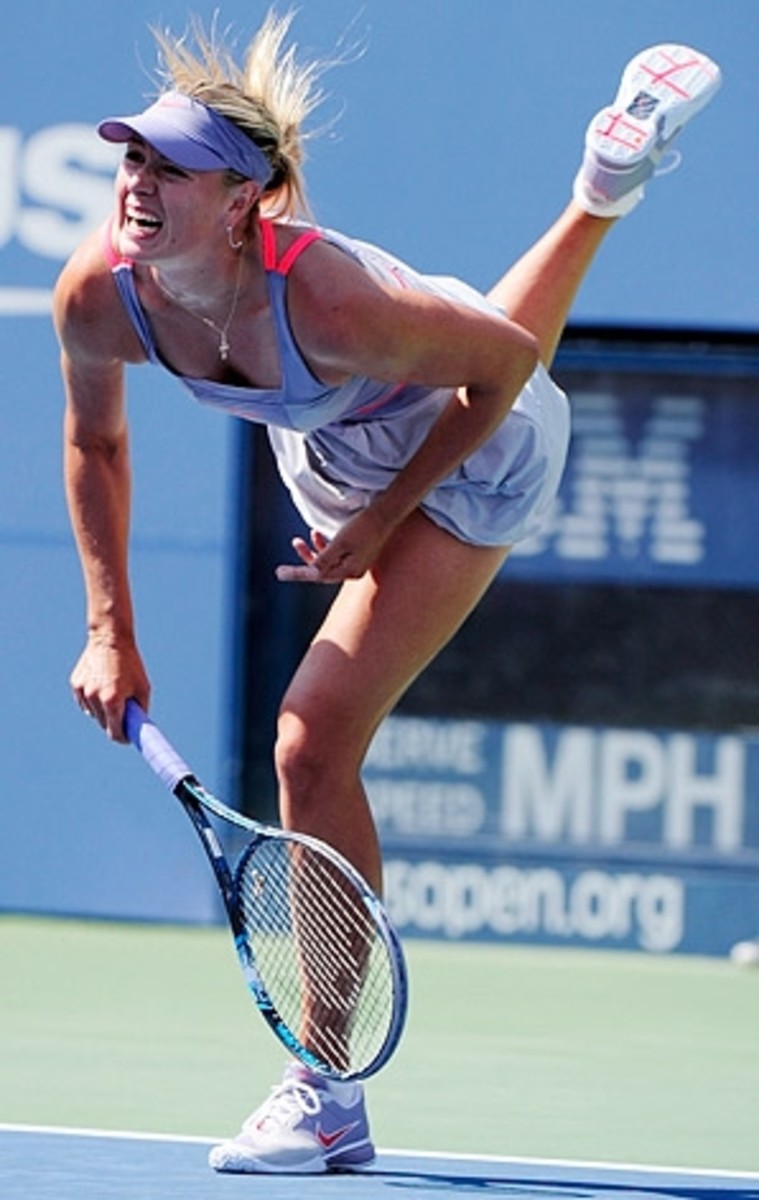
Sharapova takes third-round exit as struggling serve falls short
But there's a converse. Given that the serve is the cornerstone of a player's game, when your serve deserts you, it's easy for you to desert the tournament. Maria Sharapova knows this as well as any player in tennis today. Sharapova is still relentless from the backcourt and on the short list of the sport's fiercest battlers, a street fighter masquerading as a diva. But, for years now, she's had an on-again, off-again relationship with her serve. And these struggles have transformed her from a Grand Slam champion into a frequent upset victim.
In 2006, a 19-year-old Sharapova won the U.S. Open -- played on a surface that suited her strengths, in an atmosphere that fit her crowd-pleasing instincts -- and it was easy to envision her having a run of the place for years. But then her serve began rebelling -- shoulder surgery in 2008 certainly didn't help -- and she hasn't even made the final here since.
Sharapova's New York drought will span another year. She lost to Flavia Pennetta 6-3, 3-6, 6-4 in the third round on Friday, committing 12 double faults and 60 unforced errors. It was the upset of the tournament so far -- a tournament in which the reigning Wimbledon (Petra Kvitova) and French Open (Li Na) champions have already been eliminated -- and turned the bottom half of the women's draw into a canyon.
"Sometimes I come in on a day and I don't quite have my rhythm, and run into those errors where not only do I feel like I have to get a high percentage of first serves, but my opponent gains a tremendous amount of confidence on their return," the third-seeded Sharapova said. "So it's kind of a lose/lose situation."
Give Pennetta her due. A veteran from Italy who turns 30 in a few months, she scored one of the biggest wins of her career. Pennetta hit with unrelenting depth, moved gracefully around the court, betrayed a sixth sense for anticipation and gave as good as she got during many rallies. Fittingly on match point, Pennetta wound up and boldly coldcocked a backhand winner.
Still, a central theme to the match was Sharapova's serve. Her feet angled, her body rocking, her racket practically tapping her spine on her backswing, Sharapova struggled with a tempestuous delivery. Her double-fault haul included two in the final game as she was serving to stay in the match. In 14 games, she was broken seven times. She won only 38 percent of her second-serve points.
But, as usual in tennis, the stats tell only half the story. When your serve lets you down, it affects the rest of the your game. Playing patterns change, rhythms change, timing changes. So does a player's risk threshold. When your serve is suddenly unreliable, it's hard to justify -- consciously or unconsciously -- going for the lines during the rally. Sharapova hit five straight faults to start her 4-5 game in the third set. When she finally got the ball in the box, she played cautiously, hitting ball after ball to the middle of the court. Pennetta took advantage, slugging away. And why not?
"I didn't feel comfortable with most of my game," said Sharapova, who had been 12-0 in three-set matches this year before losing to the 26th-seeded Pennetta.
Sharapova has changed rackets and changed coaches and made a few small technical adjustments. But until she rearms herself with her serve, it's hard to see her successfully stringing together seven matches at a Grand Slam tournament. It applies to all players. But more so for Sharapova than for any of her colleagues, she would be well served to serve well.




